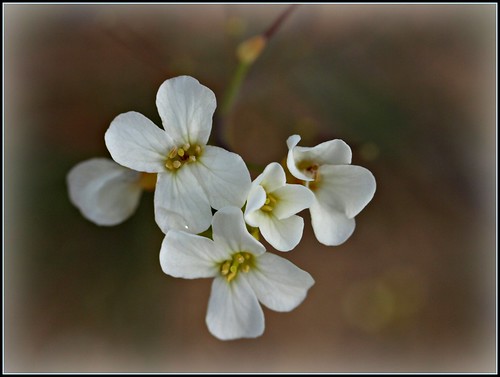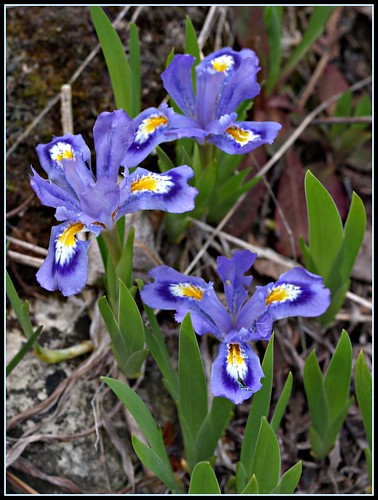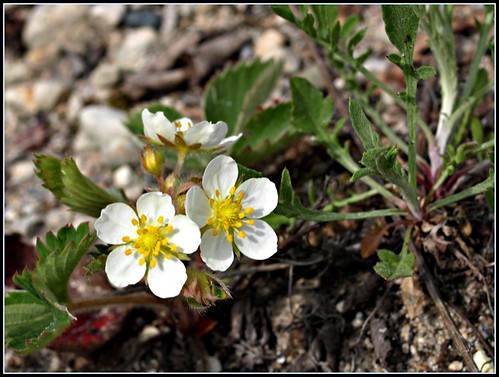Watercress (nasturtium officinale) is an aquatic plant, this one found near the shores of Lake Michigan. It is edible – the leaves are high in Vitamins A and C and iron, and was a popular plant with the early settlers of North America as it was a successful treatment and preventative of scurvy. The ancient Greeks and Romans thought eating the plant increased mental functions. It is still widely used in cooking – added to salads and sandwiches for a spicy and tangy flavor and also made into watercress soup. The flowers are savory and used as edible garnishes.
This 3 to 4 inch high Dwarf Lake Iris (iris lacustris) is found near the northern shores of The Great Lakes where it grows in the limey soil and in the cool climate. It only grows in the states of Wisconsin and Michigan. I probably saw a thousand of these flowers on my recent visit to Door County in northern Wisconsin, but the flowers are actually rare and on the threatened list of the United States Fish and Wildlife Service. It has a very limited habitat and that is shrinking because of shoreline development and the use of off-road vehicle and chemical pesticides.
This is Wild or Common Strawberry (fragaria virginiana) a variety of the plant which produces the familiar bright red strawberry. The cultivated plant is a hybrid of this native plant and the South American variety. Native Americans used the juice of the strawberry for an eye remedy, and herbalists still use the roots to treat kidney stones and gonorrhea. It is a common plant in Door County, flowering in May and June in meadows, fields, woodlands and setting its berries in June.









